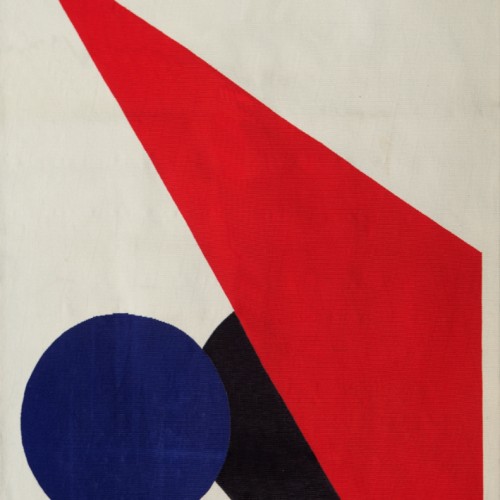Г‰mile Gilioli
Gilioli is one of the leaders of lyrical abstraction in the French sculpture of 50s alongside Brancusi and Arp.
Emile Gilioli was born on June 10, 1911, in Paris, in a family of Italian shoemakers installed at the edge of the Canal Saint-Martin. He learns the art of the forge from childhood during the holidays in his paternal family around Mantua. At the end of the First World War, the Gilioli approach Italy by settling in Nice. The young Emile works in the family business and at the same time follows classes at the school of decorative arts of the city.
In 1928, he entered the service of a craftsman sculptor for whom he worked for two years before joining the Ecole des Beaux-Arts in Paris as a fellow. He is seeing then Jean Boucher’s studio where, like many artists of his generation, he is influenced by the work of Charles Malfray. Mobilized in 1939, he is sent to Grenoble and stay there until the Liberation. On the spot, he befriends Andry- Fracy, curator of the museum from 1919 to 1949, who conveys her interest in the cubism and presents it to the painter Closon, pioneer of French abstraction.
It is in the Grenoble city that he realizes his first personal exhibition at the Galerie Laforge in 1945. Back in Paris, he animates the young abstract school of Paris with Poliakoff and Deyrolle, and exhibited his works at the Breteau gallery in 1946. He then participates in most French and foreign artistic events: Salon des RГ©alitГ©s nouvelles in 1947, exhibited frequently at the Salon de Mai, and at Salon of the Young Sculpture. The Galliera museum devotes an exhibition to him in 1968. It exposes the same year its design of art in Sculpture. The simplicity of his art where form and matter are conditioned by each other, inspired both by archaic Greece, by statuary of ancient Egypt, and Cubism, earned him honoring numbers of public orders, particularly in the department of IsГЁre, where he realizes the Memorial of Voreppe in 1946, the monument to the dead of the deportees of Grenoble en 1950, the monument of Chapelle-en-Vercors in 1951, the Gisant de Vassieux-en Vercors in 1952, the Memorial of the Resistance Plateau GliГЁres in 1973.
GilioliжЇжі•ењ‹50年代雕塑與Brancusiе’ЊArpдёЂиµ·жЉ’жѓ…жЉЅи±Ўзљ„й 導者之一。 Emile Gilioliж–ј1911年6жњ€10日出生於巴黎,在聖馬丁運河邊緣安裝了一系列意大利製鞋商。他在曼圖亞周圍的父親家еєеє¦еЃ‡жњџй–“從童年дёеёзї’йЌ›йЂ и—ќиЎ“гЂ‚ењЁз¬¬дёЂж¬Ўдё–з•Ње¤§ж€°зµђжќџж™‚пјЊGilioli在尼斯定居意大利。年輕的Emile在家族企жҐе·ҐдЅњпјЊеђЊж™‚ењЁеџЋеё‚иЈќйЈѕи—ќиЎ“еёй™ўдёЉиЄІгЂ‚ 1928е№ґпјЊд»–йЂІе…Ґдє†дёЂдЅЌе·ҐеЊ й›•еЎ‘е®¶зљ„жњЌе‹™пјЊз‚єж¤д»–е·ҐдЅњдє†е…©е№ґпјЊз„¶еѕЊеЉ е…Ґе·ґй»Ћзљ„Ecole des Beaux-ArtsдЅњз‚єз ”з©¶е“ЎгЂ‚д»–жЈењЁзњ‹Jean Bocher的工作室,就像他那一代的許多藝術家一樣,他受到了Charles Malfrayе·ҐдЅњзљ„еЅ±йџїгЂ‚д»–ж–ј1939е№ґе‹•е“ЎпјЊиў«жґѕеѕЂж је‹’и«ѕеёѓз€ѕдё¦з•™ењЁй‚ЈиЈЎз›ґе€°и§Јж”ѕгЂ‚ењЁзЏѕе ґпјЊд»–и€‡1919年至1949年的博物館館長Andry-Fracy結為朋友,他傳達了她對立體主義的興趣並將其呈現給畫家ClosonпјЊйЂ™жЇжі•ењ‹жЉЅи±Ўзљ„е…€й©…гЂ‚1945е№ґпјЊд»–ењЁж је‹’и«ѕеёѓз€ѕеё‚еЇ¦зЏѕдє†д»–ењЁLaforge畫廊的第一次個人展覽。回到巴黎,他與Poliakoffе’ЊDeyrolle一起為巴黎的年輕抽象еёж ЎжЏђдѕ›е‹•з•«пјЊдё¦ж–ј1946年在Breteauз•«е»Ље±•е‡єд»–зљ„дЅње“ЃгЂ‚з„¶еѕЊд»–еЏѓеЉ е¤§е¤љж•ёжі•ењ‹е’Ње¤–ењ‹и—ќиЎ“жґ»е‹•пјљ1947年的沙龍desRГ©alitГ©snouvelles,經常在Salon de Mai和青年雕塑沙龍展出。 Galliera博物館於1968年為他舉辦了一次展覽。同年,它展出了Sculptureзљ„и—ќиЎ“иЁиЁ€гЂ‚他的藝術簡單,形式和物質相互制約,靈感來自古老的希и‡пјЊеЏ¤еџѓеЏЉзљ„雕像和立體主義,使他贏得了許多公共秩序,特別жЇењЁдјЉжѕ¤з€ѕзњЃпјЊд»–ењЁй‚ЈиЈЎеЇ¦зЏѕзґЂеїµ1946年的VoreppeзґЂеїµзў‘пјЊ1950е№ґж је‹’и«ѕеёѓз€ѕиў«й©…йЂђиЂ…ж»иЂ…зљ„зґЂеїµзў‘пјЊ1951年的Chapelle-en-VercorsзґЂеїµзў‘пјЊ1952年的Gisant de Vassieux-en VercorsзґЂеїµзў‘пјЊ1973年的抵抗й«еЋџж јй‡Њеџѓз€ѕзґЂеїµзў‘гЂ‚


